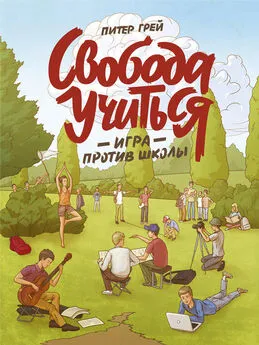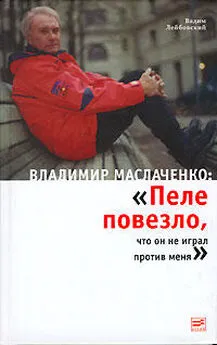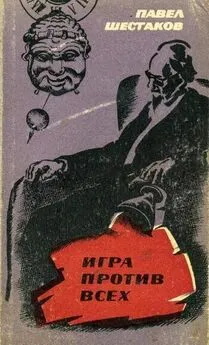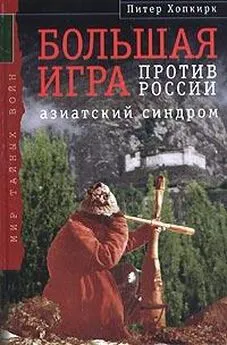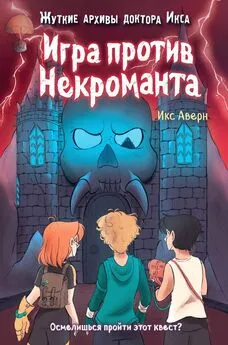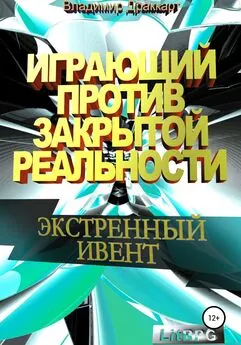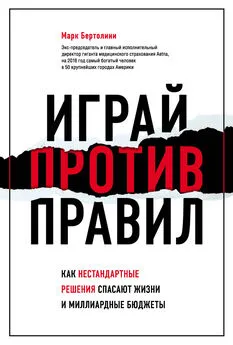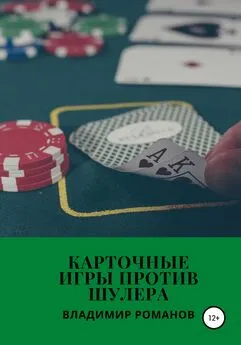Питер Грей - Свобода учиться. Игра против школы
- Название:Свобода учиться. Игра против школы
- Автор:
- Жанр:
- Издательство:Манн, Иванов и Фербер
- Год:2016
- Город:Москва
- ISBN:978-5-00100-207-9
- Рейтинг:
- Избранное:Добавить в избранное
-
Отзывы:
-
Ваша оценка:
Питер Грей - Свобода учиться. Игра против школы краткое содержание
Книга предназначена для родителей, воспитателей, учителей и всех, кто заинтересован в улучшении образования в нашем обществе.
На русском языке публикуется впервые.
Свобода учиться. Игра против школы - читать онлайн бесплатно полную версию (весь текст целиком)
Интервал:
Закладка:
Kent, S. (1996). Cultural diversity among African foragers: Causes and implications. In S. Kent (Ed.), Cultural diversity among twentieth-century foragers: An African perspective, 1–18. Cambridge: Cambridge University Press.
King, N. R. (1982). Work and play in the classroom. Social Education, 46, 110–113.
Kohn, M. L. (1980). Job complexity and adult personality. In N. J. Smelser & E. H. Erikson (Eds.), Theories of work and love in adulthood. Cambridge, MA: Harvard University Press.
Kohn, M. L., & Slomczynski, K. M. (1990). Social structure and self-direction: A comparative analysis of the United States and Poland. Cambridge, MA: Basil Blackwell.
Konner, M. (1975). Relations among infants and juveniles in comparative perspective. In M. Lewis & L. A. Rosenblum (Eds.), The origins of behavior, vol.4: Friendship and peer relations, 99–129. New York: Wiley.
–. (2002). The tangled wing: Biological constraints on the human spirit, 2nd ed. New York: Holt.
–. (2010). The evolution of childhood. Cambridge, MA: Harvard University Press.
Konrath, S. H., O’Brien, E. H., & Hsing, C. (2011). Changes in dispositional empathy in American college students over time: A meta-analysis. Personality and Social Psychology Review, 15, 180–198.
Lancy, D. F., Bock, J., & Gaskins, S. (2010). Putting learning into context. In D. F. Lancy, J. Bock, & S. Gaskins (Eds.), The anthropology of learning in childhood, 3–10. Lanham, MD: AltaMira Press.
Lanza, M. (2012). Playborhood: Turn your neighborhood into a place for play. Menlo Park, CA: Free Play Press.
LeBlanc, G., & Bearison, D. J. (2004). Teaching and learning as bi-directional activity: Investigating dyadic interactions between child teachers and child learners. Cognitive Development, 19, 499–515.
Lee, R. B. (1988). Reflections on primitive communism. In T. Ingold, D. Riches, & J. Woodburn (Eds.), Hunters and gatherers 1, 252–268. Oxford: Berg.
Lee, R. B., & DeVore, I. (1968). Problems in the study of hunters and gatherers. In R. B. Lee & I. Lee (Eds.), Man the hunter, 3–12. Chicago: Aldine.
Lepper, M. R., Corpus, J. H., & Iyengar, S. S. (2005). Intrinsic and extrinsic motivational orientations in the classroom: Age differences and academic correlates. Journal of Educational Psychology, 97, 184–196.
Lepper, M. R., Greene, D., & Nisbett, R. E. (1973). Undermining children’s intrinsic interest with extrinsic reward: A test of the “overjustification” hypothesis. Journal of Personality and Social Psychology, 28, 129–137.
Lepper, M. R., & Henderlong, J. (2000). Turning “play” into “work” and “work” into “play”: 25 years of research on intrinsic versus extrinsic motivation. In C. Sansone & J. M. Harackiewicz (Eds.), Intrinsic and extrinsic motivation, 257–307. San Diego, CA: Academic Press.
Leslie, A. M. (1994). Pretending and believing: Issues in the theory of ToMM. Cognition, 50, 211–238.
Liebenberg, L. (1990). The art of tracking: The origin of science. Claremont, South Africa: David Philip Publishers.
Liedloff, J. (1977). The continuum concept, rev. ed. New York: Knopf.
Luthar, S. S., & D’Avanzo, K. (1999). Contextual factors in substance use: A study of suburban and inner-city adolescents. Development and Psychopathology, 11, 845–867.
Luthar, S. S., & Latendresse, S. J. (2005). Children of the affluent: Challenges to well-being. Current Directions in Psychological Science, 14, 49–55.
Marshall, L. (1976). The!Kung of Nyae Nyae. Cambridge, MA: Harvard University Press.
Martini, M. (1994). Peer interactions in Polynesia: A view from the Marquesas. In J. L. Roopnarine, J. E. Johnson, & F. H. Hooper (Eds.), Children’s play in diverse cultures, 73–103. Albany: State University of New York Press.
Mayes, R., Bagwell, C., & Erkulwater, J. (2009). Medicating children: ADHD and pediatric mental health. Cambridge, MA: Harvard University Press.
Maynard, A. E. (2002). Cultural teaching: The development of teaching skills in Maya sibling interactions. Child Development, 73, 969–982.
Maynard, A. E., & Tovote, K. E. (2010). Learning from other children. In D. F. Lancy, J. Bock, & S. Gaskins (Eds.), The anthropology of learning in childhood, 181–205. Lanham, MD: AltaMira Press.
McKinstery, J., & Topping, K. J. (2003). Cross-age peer tutoring of thinking skills in high school. Educational Psychology in Practice, 19, 199–217.
McLeod, L., & Lin, L. (2010). A child’s power in game-play. Computers & Education,54, 517–527.
McMahon, R. (2007). Everybody does it: Academic cheating is at an all-time high. San Francisco Chronicle, September 9.
Melton, J. V. H. (1988). Absolutism and the eighteenth-century origins of compulsory schooling in Prussia and Austria. Cambridge: Cambridge University Press.
Merrell, K. W., Isava, D. M., Gueldner, B. A., & Ross, S. W. (2008). How effective are school bullying intervention programs? A meta-analysis of intervention research. School Psychology Quarterly, 23, 26–42.
Michaels, J. W., Blommel, J. M., Brocato, R. M., Linkous, R. A., & Rowe, J. S. (1982). Social facilitation and inhibition in a natural setting. Replications in Social Psychology, 2, 21–24.
Miller, P. (2000). Historiography of compulsory schooling. In Roy Lowe (Ed.), History of education: Major themes. Volume II: Education in its social context, Ch. 38. London: RoutledgeFlamer.
Mitra, S. (2003). Minimally invasive education: A progress report on the “hole-inthe-wall” experiments. British Journal of Educational Technology, 34, 267–371.
–. (2004). Hole in the wall. Dataquest (India), September 23. Published online at http://dqindia.ciol.commakesections.asp/04092301.asp.
–. (2005). Self-organizing systems for mass computer literacy: Findings from the “hole in the wall” experiments. International Journal of Development Issues, 4, 71–81.
Mitra, S., & Dangwal, R. (2010). Limits to self-organising systems of learning– the Kalikuppam experiment. British Journal of Educational Technology, 41, 672–688.
Mitra, S., & Rana, V. (2001). Children and the Internet: Experiments with minimally invasive education in India. British Journal of Educational Technology, 32, 221–232.
Mounts, N. S., & Roopnarine, J. L. (1987). Social-cognitive play patterns in sameage and mixed-age preschool classrooms. American Educational Research Journal, 24, 463–476.
Mulhern, J. (1959). A history of education: A social interpretation, 2nd ed. New York: Ronald Press.
Nauert, R. (2008). Teen suicide rates remain high. Published online at http://psychcentral.com/news/2008/09/04/teen-suicide-rates-remain-high/2874.html.
Newsom, C. R., Archer, R. P., Trumbetta, S., & I. Gottesman, I. I. (2003). Changes in adolescent response patterns on the MMPI/MMPI-A across four decades. Journal of Personality Assessment, 81, 74–84.
Newton, E., & Jenvey, V. (2011). Play and theory of mind: Associations with social competence in young children. Early Child Development and Care, 181, 761–773.
Noddings, N. (2005). The challenge to care in the schools: An alternative approach to education, 2nd ed. New York: Teachers College Press.
O’Brien, J., & Smith, J. (2002). Childhood transformed? Risk perceptions and the decline of free play. British Journal of Occupational Therapy, 65, 123–128.
Okamoto-Barth, S., Call, J., & Tomasello, M. (2007). Great apes’ understanding of other individuals’ line of sight. Psychological Science, 18, 462–468.
Oleck, J. (2008). Most high school students admit to cheating. School Library Journal, March 10.
Olson, C. K. (2010). Children’s motivation for video game play in the context of normal development. Review of General Psychology, 14, 180–187.
Orme, N. (2001). Medieval children. New Haven, CT: Yale University Press.
Osborne, J. A., Simon, S. B., & Collins, S. (2003). Attitudes towards science: A review of the literature and its implications. International Journal of Science Education, 25, 1049–1079.
Ozment, K. (2011). Welcome to the age of overparenting. Boston Magazine, December, 88–93, 136–137.
Parten, M. (1932). Social participation among preschool children. Journal of Abnormal and Social Psychology, 28, 136–147.
Pastor, P. N., & Reuben, M. A. (2008). Diagnosed attention deficit hyperactivity disorder and learning disability: United States, 2004–2006. Vital and health statistics, Series 10, #237. Washington, DC: US Department of Health and Human Services.
Patall, E. A., Cooper, H., & Robinson, J. C. (2008). The effects of choice on intrinsic motivation and related outcomes: A meta-analysis of research findings. Psychological Bulletin, 134, 270–300.
Pellis, S. M., & Pellis, V. C. (2011). Rough and tumble play: Training and using the social brain. In A. D. Pellgrini (Ed.), The Oxford handbook of the development of play, 245–259. Oxford: Oxford University Press.
Pellis, S. M., Pellis, V. C., & Bell, H. C. (2010). The function of play in the development of the social brain. American Journal of Play, 2, 278–296.
Piaget, J. (1932; 1965). The moral judgment of the child. New York: Free Press.
Power, T. G. (2000). Play and exploration in animals and children. Mahwah, NJ: Lawrence Erlbaum Associates.
Przybylski, A. K., Rigby, C. S., & Ryan, R. M. (2010). A motivational model of video game engagement. Review of General Psychology, 14, 154–166.
Przybylski, A. K., Weinstein, N., Ryan, R. M., & Rigby, C. S. (2009). Having versus wanting to play: Background and consequences of harmonious versus obsessive engagement in video games. CyberPsychology & Behavior, 12, 485–492.
Pytel, B. (2007). Cheating is on the rise. Published online at www.suite101.com/content/cheating-is-on-the-rise-a31238.
Ray, B. D. (2011). Research facts on homeschooling. Salem, OR: National Home Education Research Institute. Published online at www.nheri.org.
Reaves, B., & Malone, T. W. (2007). Leadership in games and work: Implications for the enterprise of massively multiplayer online role-playing games. Seriosity Inc. Published online at www.seriosity.com/downloads/Leadership_In_Games_Seriosity_and_IBM.pdf.
Reich, J. W., Erdal, K. J., & Zautra, A. (1997). Beliefs about control and health behaviors. In D. S. Gochman (Ed.), Handbook of health behavior research: I, Personal and social determinants. New York: Plenum.
Renner, M. J. (1988). Learning during exploration: The role of behavioral topography during exploration in determining subsequent adaptive behavior. International Journal of Comparative Psychology, 2, 43–56.
Rheingold, H. L., Hay, D. F., & West, M. J. (1976). Sharing in the second year of life. Child Development, 47, 1148–1158.
Ricaurte, G. A., Mechan, A. O., Yuan, J., Hatzidimitriou, G., Xie, T., Mayne, A.H., & McCann, U. D. (2005). Amphetamine treatment similar to that used in the treatment of ADHD damages dopamine nerve endings in the striatum of adult nonhuman primates. Journal of Pharmacology and Experimental Therapeutics, 315, 91–98.
Richards, C. A., & Sanderson, J. A. (1999). The role of imagination in facilitating deductive reasoning in 2-, 3-, and 4-year-olds. Cognition, 72, 81–89.
Ridley, M. (2003). Nature via nurture: Genes, experience, and what makes us human. New York: HarperCollins.
Roberts, W. A., Cruz, C., & Tremblay, J. (2007). Rats take correct novel routes and shortcuts in an enclosed maze. Journal of Experimental Psychology: Animal Behavior Processes, 33, 79–91.
Roopnarine, J. L., Johnson, J. E., & Hooper, F. H. (Eds.). (1994). Children’s play in diverse cultures. Albany: State University of New York Press.
Ross, E. A. (1901). Social control: A survey of the foundations of order. New York: Macmillan.
Читать дальшеИнтервал:
Закладка:
